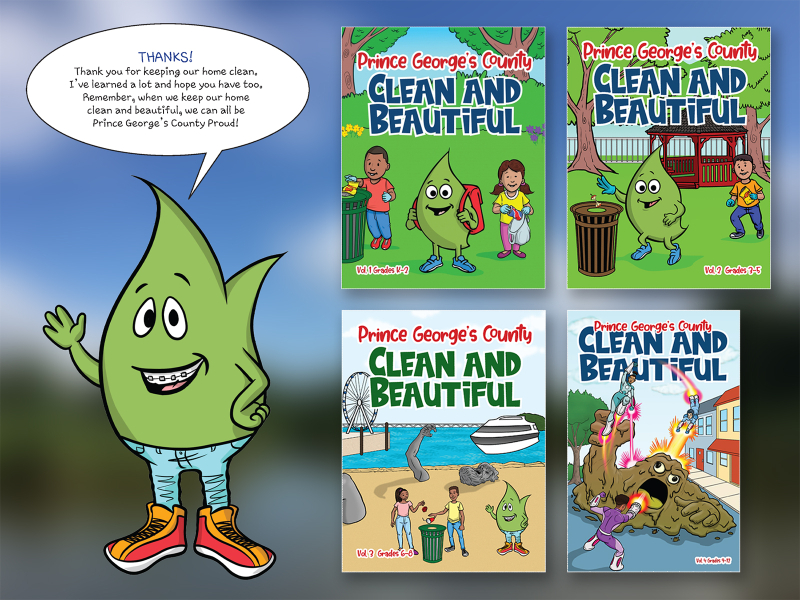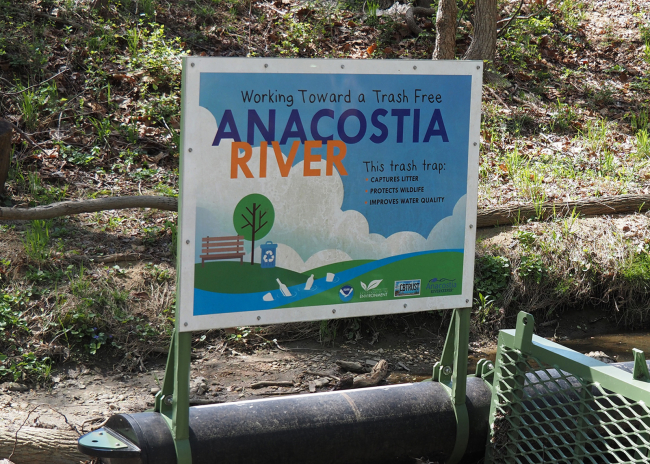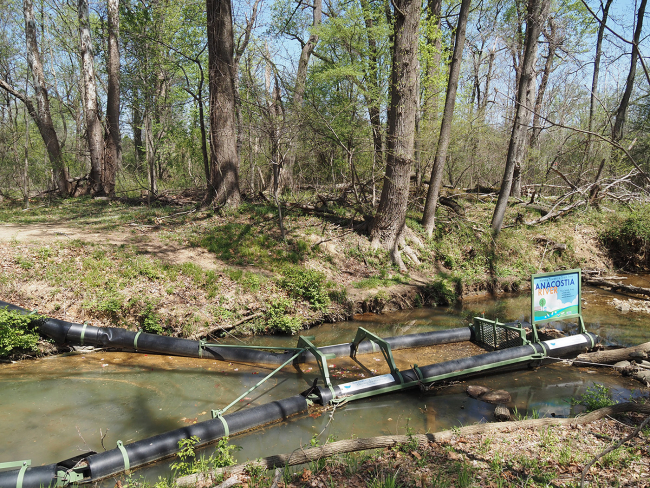The Anacostia River has a long and important history. Its name is derived from the Anacostan/Nacotchtank tribe who lived on lands along the river and portions of what is the present-day Washington, DC metro area. Over the past several hundred years, the Anacostia River has served as a major trade hub for the east coast, borne witness to major events in American history, and more recently, suffered significant pollution challenges as the lands around it have developed and the population increased.
Today, the Anacostia River watershed is home to more than 800,000 people, encompassing portions of Washington, DC, and Prince George’s and Montgomery Counties in Maryland. Unfortunately, each year hundreds of tons of trash from surrounding lands makes its way into the river. Nearby communities have been working hard to address this problem, and help guide overall reductions in trash and litter entering the river.
In 2018, Prince George's County began implementing a project with funding from the NOAA Marine Debris Program as part of the county's effort to reduce trash flowing into the Anacostia River and downstream into the Potomac River and Chesapeake Bay.
Work initially began with the planning, design, and installation of two Bandalong trash traps to capture debris before it gets any further downstream. These passive capture systems work to stop any floating debris that is flowing downstream, which is then removed and properly disposed of. The traps are strategically placed in waterways that are hotspots for litter.
The County worked with the Metropolitan Washington Council of Governments to monitor and assess the effectiveness of the trash traps by conducting surveys before and after installation. This included counting the amount of trash in the waterway and monitoring wildlife, such as fish and insects, in the stream above and below the traps. This effort is critical to better understand the impact of these trash traps and community litter reduction campaigns on the health of the Anacostia River.
Reducing marine debris through upstream traps like Bandalongs is only one part of the picture. The ultimate solution to marine debris is preventing it from getting into the environment in the first place. To inspire the community to prevent debris, Prince George’s County enlisted the help of "Spencer the Sprout.” Through a series of educational workbooks and an interactive website, Spencer teaches K-12 students about the environment in Prince George’s County and the importance of reducing, reusing, and recycling. Spencer’s adventures feature familiar local sites to help connect readers with the impacts of littering in their own communities.

Project lead and County Litter Reduction Program Manager Tiaa B. Rutherford underscored the importance of working with youth in Prince George's County: “Our goal is to aid in providing real time environmental education tools that will shape students' experience in our school district. Spencer the Sprout makes learning about the impact and prevention of marine debris relatable to Prince George’s County students from grades K-12.”
Prince George’s County is working to prevent and reduce the amount of trash flowing into local waterways, while shifting perceptions and encouraging positive behaviors through place-based outreach and educational initiatives. By working together, local communities throughout the watershed are helping restore the health of the Anacostia River and restore pride in this historic waterway.


